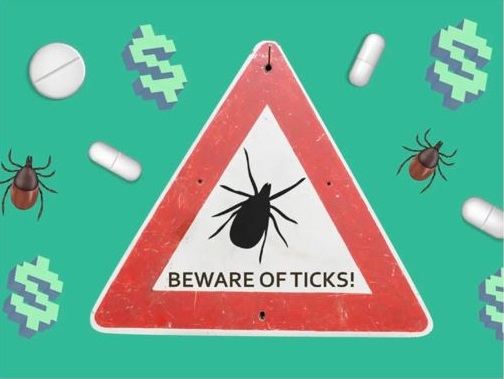TOUCHED BY LYME: The thorny question of (no) insurance coverage for Lyme

People suffering from persistent Lyme disease typically make a lot of unpleasant discoveries early on. For instance, how many different places your body can hurt. And how exhausting even simple exercise can be.
But the pain and exhaustion isn’t just physical. It’s also financial. Turns out, your regular doctor probably can’t help you—and your health insurance likely won’t pay for anybody who can.
The topic is frequently discussed in Lyme patient support groups, whether online or (back in the day) in-person.
But the issue of lack of insurance coverage for Lyme disease treatment is rarely mentioned in the mainstream news media.
Therefore, I was pleasantly surprised to see the following headline and article in Business Insider, an online news publication with a worldwide readership.

Profiling a patient from Northern California, she notes: “Over three years, she estimates she paid around $100,000 for antibiotics and other medications, an amount that drained her and her husband’s savings account and retirement funds, but that managed to rein in the avalanche of symptoms.”
Schlitz explains that insurance companies often refuse to cover the costs of treatment because of the Infectious Diseases Society of America’s stance on the subject. She writes:
“Anthem, one of the largest insurers in the country, considers long-term antibiotic treatment for Lyme disease ‘medically unnecessary,’ which means that if an Anthem member’s Lyme disease symptoms aren’t cured with a few weeks of antibiotic pills, their health plan would likely not pay for additional treatment.”
Schlitz continues:
“It can be difficult to pin down what kind of treatment insurance companies will cover, because much depends on the state the patient lives in and how much work a doctor puts in to get insurance to approve a drug, Lorraine Johnson, the head of LymeDisease.org, a Lyme disease advocacy group, said. But because the best method for treating the disease’s long-term effects remains elusive, insurers should rely on clinical judgement of doctors rather than opting not to cover treatment at all, Johnson said.”
Not covered in this article is Torrey v. IDSA, a lawsuit originally brought by patients against the IDSA, its Lyme guideline authors and eight insurance companies.
As it now stands, the insurance companies have all settled and the individual authors have been dropped from the suit. According to journalist Mary Beth Pfeiffer, who has been following the case, “Pending approval by the court, TORREY v. IDSA is now an anti-trust lawsuit against a single defendant: The Infectious Diseases Society of America.” See her website for more information about Torrey v. IDSA.
Click here to read the article in Business Insider.
TOUCHED BY LYME is written by Dorothy Kupcha Leland, LymeDisease.org’s Vice-president and Director of Communications. She is co-author of When Your Child Has Lyme Disease: A Parent’s Survival Guide. Contact her at dleland@lymedisease.org.




















We invite you to comment on our Facebook page.
Visit LymeDisease.org Facebook Page